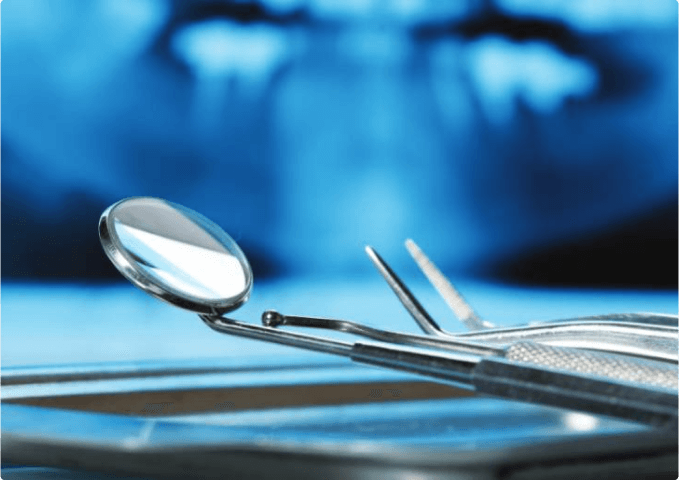
In the daily rhythm of our lives, few habits are as universally practiced—yet frequently misunderstood—as brushing our teeth. As a cornerstone of oral health, proper brushing technique can be the difference between a lifetime of healthy smiles and years of dental complications. At Central Park Dental, Dr. Jung has witnessed firsthand how small adjustments to your brushing routine can transform your oral health journey.
“Most patients are surprised to learn they’ve been brushing incorrectly their entire lives,” notes Dr. Jung. “Effective brushing isn’t about aggressive scrubbing—it’s about technique, consistency, and understanding the unique landscape of your mouth.”
This comprehensive guide will walk you through everything you need to know about optimizing your brushing routine, backed by Dr. Jung’s years of clinical experience at Central Park Dental and the latest research in dental care.
Understanding the Importance of Proper Brushing
Before diving into technique, it’s worth understanding why brushing matters so much. Your mouth is home to hundreds of bacterial species. While many are beneficial, others can contribute to common dental issues when left unchecked:
Plaque Formation: Without regular brushing, bacteria form a sticky film called plaque on teeth surfaces. This biofilm harbors harmful bacteria that produce acids.
Tooth Decay: These bacterial acids gradually dissolve tooth enamel, leading to cavities that can eventually reach the sensitive inner structures of your teeth.
Gum Disease: Plaque buildup along the gumline causes inflammation, leading to gingivitis and, if untreated, more serious periodontal disease.
Systemic Health Connections: Research continues to demonstrate connections between oral health and conditions including heart disease, diabetes, and respiratory infections.
At Central Park Dental, Dr. Jung emphasizes a holistic approach to oral care that begins with mastering the fundamentals of brushing.
Selecting the Right Tools for Your Brushing Routine
Choosing Your Toothbrush
The toothbrush market can be overwhelming, but Dr. Jung offers straightforward guidance:
Manual vs. Electric: “While both can be effective when used properly,” Dr. Jung explains, “electric toothbrushes often help patients achieve more consistent results, especially those with dexterity issues or those who tend to brush too aggressively.”
Bristle Softness: Always choose soft bristles. Medium and hard bristles can damage enamel and gum tissue, leading to recession and sensitivity over time.
Head Size: Select a toothbrush with a head small enough to reach all areas of your mouth, including behind your back molars.
Replacement Schedule: Replace your toothbrush or brush head every three months, or sooner if bristles become frayed or splayed.
Toothpaste Considerations
At Central Park Dental, we recognize that toothpaste selection is personal. Dr. Jung recommends considering these factors:
Ingredients for Sensitivity: If you experience tooth sensitivity, look for products containing potassium nitrate or stannous fluoride, which help block pain signals from the tooth nerve.
Natural Alternatives: For patients preferring natural options, toothpastes containing ingredients like xylitol (a natural sweetener that inhibits bacterial growth) can be effective alternatives.
Whitening Formulations: While whitening toothpastes can help maintain brightness, they should be used cautiously as some contain abrasives that may damage enamel with long-term use.
Specialized Formulations: Patients with specific concerns like dry mouth or gum disease may benefit from specialized formulations addressing these conditions.
The Central Park Dental Method: Perfect Brushing Technique
After years of guiding patients toward healthier smiles, Dr. Jung has developed what we call the Central Park Dental Method—a systematic approach to brushing that ensures comprehensive coverage and optimal plaque removal.
Preparation
- Time Commitment: Set aside a full two minutes for brushing. Research shows most people brush for only 45 seconds, missing critical areas.
- Brush Positioning: Hold your toothbrush at a 45-degree angle to your gumline. This position allows bristles to clean both the tooth surface and slightly beneath the gum margin where plaque accumulates.
- Pressure Awareness: Apply gentle pressure only—about the weight of an orange. Excessive pressure damages enamel and gums.
The Quadrant System
Dr. Jung recommends dividing your mouth into four quadrants:
- Upper right
- Upper left
- Lower right
- Lower left
Spend 30 seconds thoroughly cleaning each quadrant using the following technique:
Motion Technique
For outer and inner tooth surfaces:
- Use short, gentle circular motions
- Focus on 2-3 teeth at a time
- Ensure bristles reach the junction where teeth meet gums
For chewing surfaces:
- Use short back-and-forth strokes
- Keep bristles pressed firmly (but gently) into the grooves
For front teeth inner surfaces:
- Tilt brush vertically
- Use up-and-down strokes with the tip of the brush
Often-Missed Areas
Dr. Jung notes that certain areas consistently escape proper attention:
Back Molars: The very back surfaces of your last molars are frequently missed. Take extra time to reach these areas, adjusting your grip if necessary.
Inner Surfaces: The tongue-facing surfaces of teeth, especially lowers, often receive insufficient attention. These areas are just as susceptible to plaque buildup.
Along the Gumline: The junction where teeth meet gums harbors significant bacterial colonies. Ensure bristles access this crucial boundary.
Beyond the Basics: Comprehensive Oral Care
At Central Park Dental, we believe brushing is just one component of a complete oral health routine. Dr. Jung recommends integrating these practices:
Interdental Cleaning
“Even perfect brushing only cleans about 60% of your tooth surfaces,” explains Dr. Jung. “The spaces between teeth harbor some of the most damaging bacteria.”
Effective interdental cleaning options include:
Dental Floss: Traditional string floss remains highly effective when used with proper technique. Wrap in a C-shape around each tooth and gently slide below the gumline.
Floss Picks: While less maneuverable than string floss, these provide a practical alternative for those who struggle with traditional flossing.
Interdental Brushes: These tiny brushes can be more effective than floss for cleaning larger spaces, particularly for patients with periodontal disease or widely spaced teeth.
Water Flossers: These devices use pressurized water to clean between teeth and below the gumline, offering an excellent option for patients with braces, bridges, or dexterity limitations.
Tongue Cleaning
The rough surface of your tongue harbors bacteria that contribute to bad breath and can recolonize clean tooth surfaces. Dr. Jung recommends:
- Using a dedicated tongue scraper or the tongue-cleaning feature on your toothbrush
- Working from back to front with gentle pressure
- Rinsing thoroughly after cleaning
Mouthwash Considerations
While not a replacement for mechanical cleaning, therapeutic mouthwashes can complement your brushing routine:
Antimicrobial Rinses: These can help reduce bacteria that cause gingivitis and bad breath.
Alcohol-Free Options: Dr. Jung often recommends alcohol-free formulations, especially for patients with dry mouth conditions.
Timing Matters: Use mouthwash at a different time than brushing to extend protection throughout the day.
Brushing for Special Situations
Children’s Brushing Needs
At Central Park Dental, Dr. Jung offers these guidelines for helping children develop healthy brushing habits:
Age-Appropriate Supervision: Children typically need supervision until around age 7-8, though manual dexterity varies by child.
Making It Fun: Use timers, apps, or songs to ensure adequate brushing duration. Reward charts can reinforce consistency.
Leading By Example: Brush alongside your child to demonstrate proper technique and establish brushing as a family value.
Brushing with Braces
Orthodontic appliances create additional plaque traps requiring special attention:
Specialized Tools: Consider orthodontic brush heads designed to clean around brackets and wires.
Additional Time: Patients with braces should extend brushing time to ensure thorough cleaning.
Supplementary Products: Interdental brushes and water flossers are particularly valuable for orthodontic patients.
Managing Sensitivity While Brushing
For patients experiencing tooth sensitivity, Dr. Jung recommends:
Temperature Adjustment: Use lukewarm water rather than cold when brushing sensitive teeth.
Desensitizing Products: Consider toothpastes specifically formulated for sensitivity, using them consistently for at least two weeks to see results.
Technique Modification: Pay special attention to gentle pressure for sensitive areas, using extra-soft bristled brushes.
Common Brushing Mistakes Dr. Jung Sees at Central Park Dental
Through years of practice, Dr. Jung has identified several brushing habits that compromise oral health:
Overly Aggressive Brushing
“I see the consequences of ‘scrub brushing’ daily,” says Dr. Jung. “Patients are often surprised to learn their diligent, forceful brushing is actually causing gum recession and enamel wear.”
Signs you may be brushing too hard include:
- Splayed toothbrush bristles
- Notching at the gumline
- Persistent gum tenderness
- Increasing tooth sensitivity
Inadequate Brushing Duration
Most patients significantly overestimate their brushing time. Dr. Jung recommends:
- Using a timer or electric toothbrush with a built-in timer
- Mentally dividing your mouth into sections, spending equal time on each
- Creating a consistent routine that ensures thoroughness
Improper Storage and Hygiene
Your toothbrush itself can harbor bacteria if improperly maintained:
- Store upright in an open-air container
- Allow full drying between uses
- Keep separated from other household members’ brushes
- Never share toothbrushes, even among family members
The Technology of Brushing: Modern Innovations
At Central Park Dental, Dr. Jung stays current with technological advances that can enhance your brushing experience:
Smart Toothbrushes
The latest generation of electric toothbrushes includes features like:
- Real-time feedback on pressure and coverage
- Bluetooth connectivity with smartphone apps that track habits
- Customized brushing programs for specific oral health needs
Alternative Cleaning Technologies
Beyond traditional brushing, emerging technologies include:
- Ultrasonic cleaning devices
- Light-activated toothpastes that target specific bacteria
- Specialized brush designs for patients with physical limitations
Creating Your Personal Oral Care Timeline
Dr. Jung recommends this daily schedule for optimal oral health:
Morning Routine:
- Brush thoroughly upon waking using the Central Park Dental Method
- Clean interdentally (floss, water flosser, etc.)
- Consider a therapeutic mouthwash
After Meals:
- Rinse with water
- Wait 30 minutes before brushing if consumed acidic foods/beverages
- Use sugar-free gum containing xylitol when brushing isn’t possible
Evening Routine:
- Floss or use interdental cleaners
- Brush thoroughly using the Central Park Dental Method
- Avoid eating/drinking (except water) afterward
When to Seek Professional Guidance
While proper brushing forms the foundation of oral health, certain signs indicate the need for professional intervention. Contact Central Park Dental if you experience:
- Bleeding gums that persist despite proper brushing
- Increased tooth sensitivity
- Visible changes to teeth or gums
- Persistent bad breath despite good hygiene
- Pain or discomfort when brushing
The Central Park Dental Difference: Personalized Brushing Guidance
At Central Park Dental, Dr. Jung offers personalized brushing assessments during regular checkups. These evaluations involve:
- Disclosing solutions that temporarily stain plaque, revealing missed areas
- Technique demonstrations using models or intraoral cameras
- Customized recommendations based on your unique oral anatomy
- Follow-up coaching to ensure improvement
“No two mouths are identical,” emphasizes Dr. Jung. “What works perfectly for one patient may need adjustment for another. That’s why individual assessment is so valuable.”
Conclusion: Investing in Your Smile’s Future
Proper brushing technique represents one of the most significant investments you can make in your long-term oral health. The few minutes you spend each day with your toothbrush directly impact everything from your smile’s appearance to your overall systemic health.
At Central Park Dental, Dr. Jung is committed to partnering with you on your oral health journey. Beyond treating dental issues, we prioritize education and prevention—empowering you with the knowledge and skills to maintain optimal oral health between visits.
Ready to transform your brushing routine and experience the difference professional guidance can make? Schedule your comprehensive oral health assessment with Dr. Jung today. Call Central Park Dental at 817-466-1200 or schedule your appointment.
Your healthiest smile begins with the fundamentals—and masterful brushing is where it all starts.


